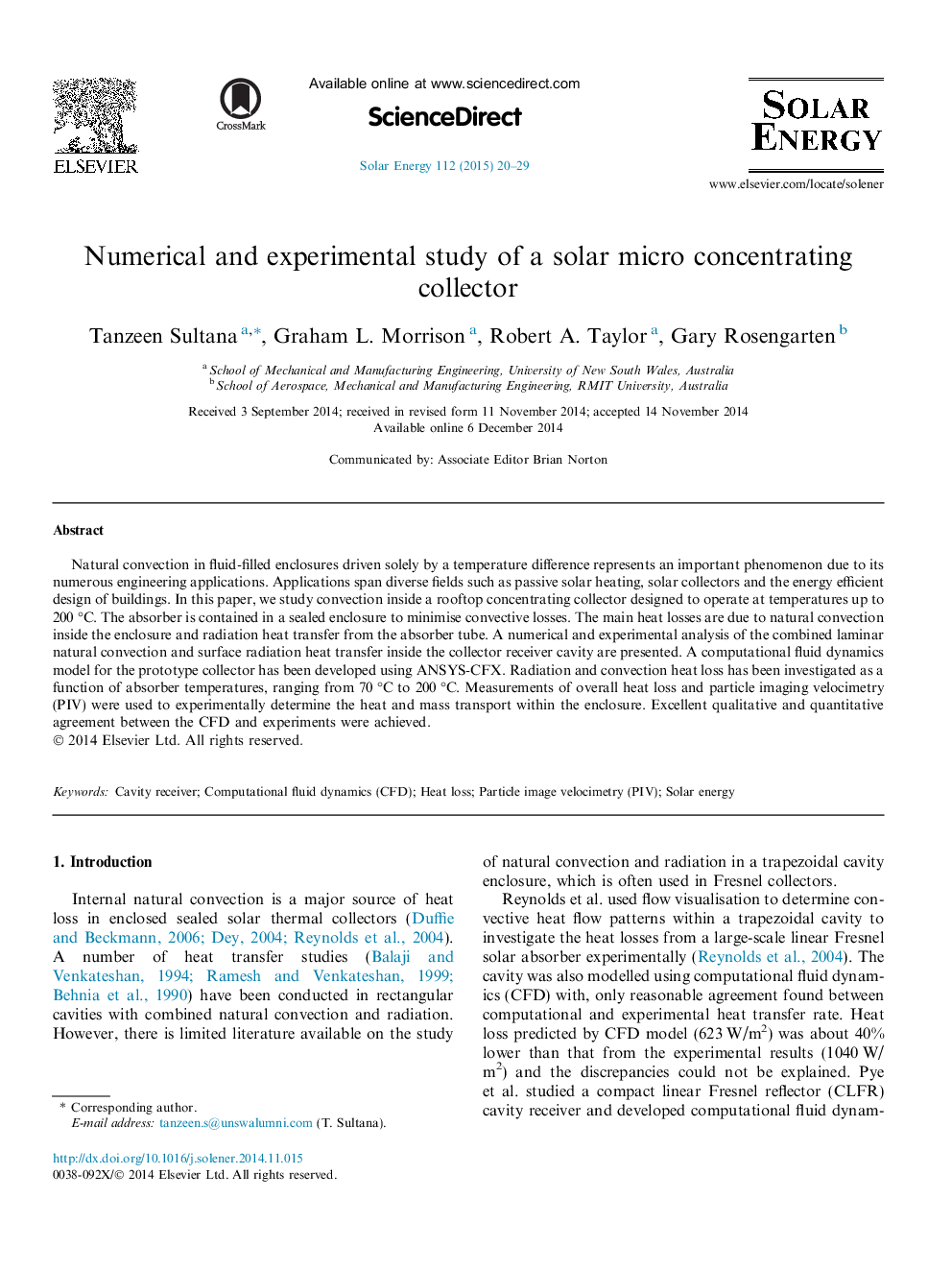| Article ID | Journal | Published Year | Pages | File Type |
|---|---|---|---|---|
| 1549745 | Solar Energy | 2015 | 10 Pages |
•We model the prototype collector using ANSYS-CFX, a computational fluid dynamics software package.•We present the heat loss results of a computational and particle image velocimetry experimental investigation.•We investigate the role of radiation and natural convection heat transfer inside the collector trapezoidal cavity.
Natural convection in fluid-filled enclosures driven solely by a temperature difference represents an important phenomenon due to its numerous engineering applications. Applications span diverse fields such as passive solar heating, solar collectors and the energy efficient design of buildings. In this paper, we study convection inside a rooftop concentrating collector designed to operate at temperatures up to 200 °C. The absorber is contained in a sealed enclosure to minimise convective losses. The main heat losses are due to natural convection inside the enclosure and radiation heat transfer from the absorber tube. A numerical and experimental analysis of the combined laminar natural convection and surface radiation heat transfer inside the collector receiver cavity are presented. A computational fluid dynamics model for the prototype collector has been developed using ANSYS-CFX. Radiation and convection heat loss has been investigated as a function of absorber temperatures, ranging from 70 °C to 200 °C. Measurements of overall heat loss and particle imaging velocimetry (PIV) were used to experimentally determine the heat and mass transport within the enclosure. Excellent qualitative and quantitative agreement between the CFD and experiments were achieved.
